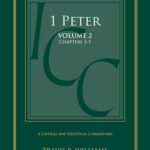“History is More or Less Bunk”… But Let’s Build a Museum Anyway
 In 1916, the Chicago Tribune published a series of articles about Henry Ford, the famous industrialist. One of those articles included a statement from Ford that, with slight variations, has been repeated many times over, often to the chagrin of history teachers. Ford was quoted as saying,
In 1916, the Chicago Tribune published a series of articles about Henry Ford, the famous industrialist. One of those articles included a statement from Ford that, with slight variations, has been repeated many times over, often to the chagrin of history teachers. Ford was quoted as saying,
History is more or less bunk. It’s tradition. We don’t want tradition. We want to live in the present.
 This frequently quoted statement provides the background to an interesting story. In those same Chicago Tribune articles, Ford was also characterized as “an anarchist” and “an ignorant idealist.” In response to such accusations, Ford sued the paper for libel. The trial, which took place in Mt. Clemens, MI, ended with a guilty verdict. Ford’s name was technically cleared though the publicity surrounding the trial had certainly sullied his reputation. The fact that his request for a $1 million dollar judgment was reduced to a paltry 6 cents probably didn’t help things. On the way home from the trial, Ford allegedly told one of his colleagues,
This frequently quoted statement provides the background to an interesting story. In those same Chicago Tribune articles, Ford was also characterized as “an anarchist” and “an ignorant idealist.” In response to such accusations, Ford sued the paper for libel. The trial, which took place in Mt. Clemens, MI, ended with a guilty verdict. Ford’s name was technically cleared though the publicity surrounding the trial had certainly sullied his reputation. The fact that his request for a $1 million dollar judgment was reduced to a paltry 6 cents probably didn’t help things. On the way home from the trial, Ford allegedly told one of his colleagues,
We’re going to start something. I’m going to start up a museum and give people a true picture of the development of the country. That’s the only history that is worth observing, that you can preserve in itself. We’re going to build a museum that’s going to show industrial history, and it won’t be bunk! We’ll show the people what actually existed in years gone by and we’ll show the actual development of American industry from the early days, from the earliest days that we can recollect up to the present day.
Ford soon put feet to his grand intention. In 1920, he began collecting items that would form the nucleus of a historical museum. Ford also sent agents throughout the country in search of significant historical artifacts that could be added to his collection. In some cases, entire buildings were dismantled, moved across country, and reassembled in Dearborn, MI. In October of 1929, the Thomas Edison Institute was officially dedicated by president Herbert Hoover, and in 1933 its doors were finally opened to the public. From its relatively small beginnings, the Edison Institute quickly grew in size and prestige. Ford explained part of the motivation and philosophy behind the institute. He said,
I am collecting the history of our people as written into things their hands made and used.
When I went to our American history books to learn how our forefathers harrowed the lands, I learned that historians knew nothing of harrows. Yet our country depended more on harrows than guns or speeches. I thought that a history that excluded harrows and all the rest of daily life is bunk and I think so yet.
 Today, the Edison Institute, better known as the Henry Ford Museum and Greenfield Village, or simply “The Henry Ford,” is a large indoor and outdoor museum that traces American industrial and agricultural history. At the Henry Ford visitors can see the presidential limousines in which Kennedy, Reagan, and others rode. Visitors can ride in a Model-T (for some reason they’re all black) or on a 99-year old carousel (my kids’ favorite). And visitors can view many thousands of cultural artifacts that help one see what earlier times were like. It’s a fascinating place to spend a day, and located just a few miles from DBTS, it’s one that many seminary students have enjoyed.
Today, the Edison Institute, better known as the Henry Ford Museum and Greenfield Village, or simply “The Henry Ford,” is a large indoor and outdoor museum that traces American industrial and agricultural history. At the Henry Ford visitors can see the presidential limousines in which Kennedy, Reagan, and others rode. Visitors can ride in a Model-T (for some reason they’re all black) or on a 99-year old carousel (my kids’ favorite). And visitors can view many thousands of cultural artifacts that help one see what earlier times were like. It’s a fascinating place to spend a day, and located just a few miles from DBTS, it’s one that many seminary students have enjoyed.
The existence of the Henry Ford Museum suggests that its founder ultimately believed that the past was a place worth visiting and history was a subject worth studying. One may continue to quote Henry Ford’s statement about history being bunk, but a visit to the museum that Ford actually built demonstrates that history is far more interesting than a list of names and dates, and it has something to teach us.



Thanks for this delightful post. The Henry Ford is one of my favorite places to visit, a real gem in the Metro Detroit area.